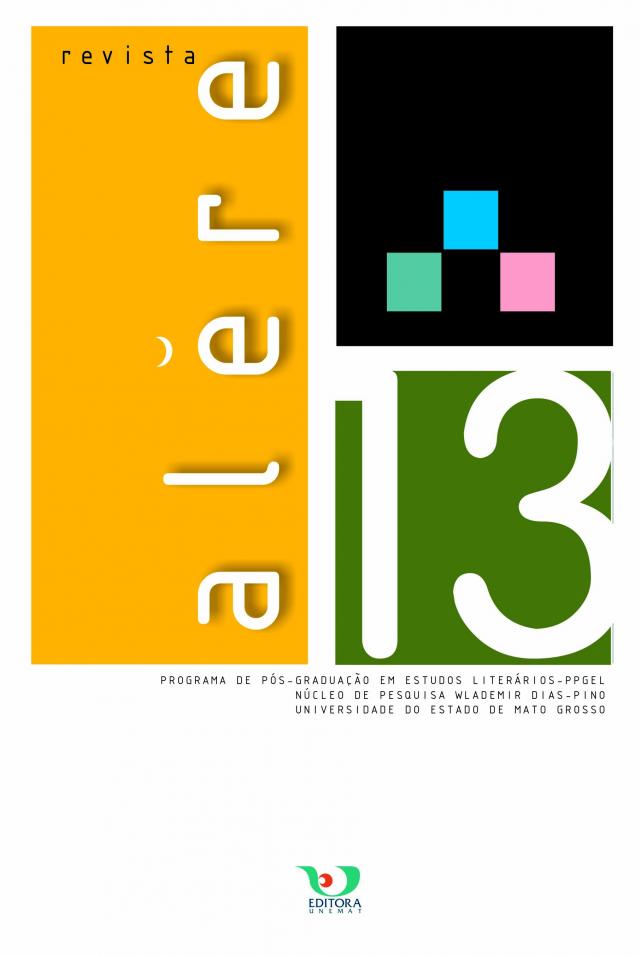THE LOCAL IN VIDEOGAMES: TEXTUALITY, MEANING-MAKING, AND AFFORDANCE
Resumo
This article aims at relating a research project about locality of videogame content to the larger body of knowledge in game studies. Based on the belief that video games function as a cultural voice that is not generation-specific, in the same way films are, the research project "Local Videogames" seeks to create and apply a special model of building game narratives out of local experiences; stories from the collective popular memory of one region as opposed to the familiar and metropolitan narratives. The goal of our article is to place the project and its game production in the perspective of game studies. We attempt to construct this relation in the light of Melcer’s (2015) study and based on key concepts in game studies: gamification, textuality, flow, meaning-making, and affordance.
Downloads
Referências
AARSETH, E. Cybertext: Perspectives on Ergodic Literature. Baltimore: Johns Hopkins UP, 1997.
ARJORANTA, J. “Game Definitions: A Wittgensteinian Approach”. Game Studies.14.1 (2014). Web. Available at: <http://gamestudies.org/1401/articles/arjoranta>. Accessed on: April 15, 2016.
ATKINS, B. More Than a Game: The Video game as a Fictional Form. New York: Manchester UP, 2003.
BOGOST, I. “Gamification is Bullshit”. Ian Bogost Blog. 2011. Available at: <http://bogost.com/writing/blog/gamification_is_bullshit/>. Accessed on: April 15, 2016.
BRUNER, Jerome. Acts of Meaning. Cambridge, MA, and London: Harvard UP, 1990.
______. Making Stories: Law, Literature, Life. Cambridge, MA, and London: Harvard UP, 2002.
CSIKSZENTMIHALYI, M. Flow: The Psychology of Optimal Experience. New York: Harper & Row, 1990.
HOLLAND, N. The Dynamics of Literary Response. New York: Oxford UP, 1968.
______. "Unity Identity Text Self"". Reader-Response Criticism: From Formalism to Post-Structuralism. Ed. Jane P. Tompkins. Baltimore: Johns Hopkins UP, 1980.
HUIZINGA, J. Homo Ludens: A Study of the Play-Element in Culture. Boston: Beacon Press, 1964.
KOSTER, R. A Theory of Fun for Game Design. Scottesdale, AZ: Paraglyph Press, 2005.
LAUREL, Brenda. Computers as Theatre. Boston: Addison-Wesley Publishing, 1993. Print.
MELCER, E., NGUYEN, D., CHEN, Z., CANOSSA, A., EL-NASR, M., & ISBISTER, K. (2015). “Games Research Today: Analyzing the Academic Landscape 2000-2014.” Foundations of Digital Games. 2015.
MURRAY, J. Hamlet on the Holodeck: The Future of Narrative in Cyberspace. New York: Free Press, 1997.
NITSCHE, M. Video Game Spaces: Image, Play, and Structure in 3D Game Worlds.
Cambridge, Mass.: MIT Press, 2008.
PORTNOW, J. “Analysis: Inside Brazil's Video Game Ecosystem”. Gamasutra: The Art and Business of making Games, 2010. Available at: <http://www.gamasutra.com/php-bin/news_index.php?story=26645>. Accessed on: January 24, 2012.
TAVINOR, G. The Art of Videogames. Malden, MA: Wiley Blackwell, 2009. Print.
THABET, T, CHRISTIANO, A. “Symbolic Mediation in the Red Foot Saga”. Interfaces Brasil/Canadá. Canoas, v. 15, n. 1, 2015, p. 386-409.
ZIMMERMAN, Eric. “Narrative, Interactivity, Play, and Games: Four Naughty Concepts in Need of a Discipline”. First Person: New Media as Story, Performance, and Game. Eds. Noah Wardrip-Fruin and Pat Harrington. Cambridge, MA: MIT Press, 2004. p. 154-64.

